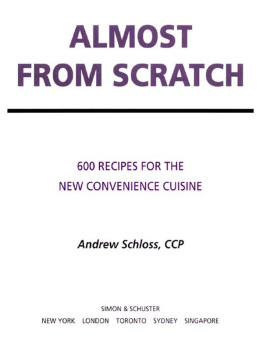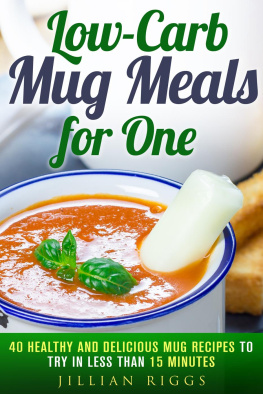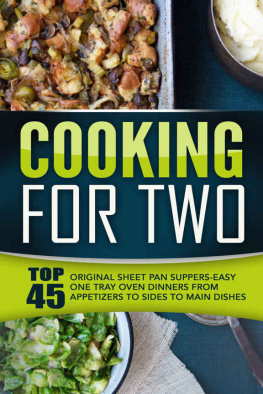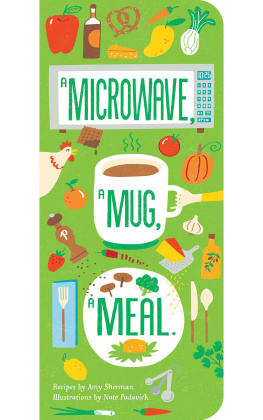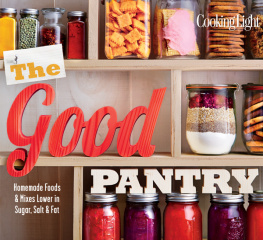
Birthing a book is usually a complex labor, but this one has come to life with such joy and ease I can only attribute it to the skill and professionalism of all who helped to nurse it along. Lisa Ekus, Bill LeBlond, Amy Treadwell, Marilyn Anthony, Tara Mataraza Desmond, Aya Akazawa, Yolanda Accinelli, Doug Ogan, and my family and friends who consumed with equal grace and helpful criticism both the triumphs and disasters that emerged from my kitchen as these pages were conceived.
THE CHANGING FACE OF HOMEMADE
When was the last time you made soup from scratch, or salad dressing, or cake? Theres no need to apologize; homemade has changed. Today, the everyday home cook needs a few shortcuts, and Im not just talking about sauces made from condensed soup and packets of dried onion dip. Theyve been usurped by jars of bruschetta, pesto, and tapenade. Theyve been elevated by demi-glace concentrate and fig balsamic glaze, and internationalized with cans of coconut milk, Thai peanut paste, and curry cooking sauce.
This new crop of prepared ingredients is not just a way to get food on the table; rather, they provide an opportunity for home cooks to rediscover the joy of cooking.
Let the naysayers decry the demise of homemade food. I say the future of home cooking is bright, for though we have less and less time to cook, we have more and more options. The tedious has become fun, the complicated has been demystified, and what used to take hours to prepare is now ready in minutes.
In these pages you will find more than three hundred inventive recipes thatwill jump-start the way you cook. With the help of carefully selected flavor-packed products combined with fresh ingredients, you will learn to create the kind of food you never would have thoughtyou could make at home. Smoked Salmon become effortless when you take advantage of the revolution that has transformed the food market into your own personal prep kitchen.
This phenomenon is not confined to individual ingredientsits a new way to cook that streamlines the way we prepare everything, from soup to dessert. Our opportunities continue to expand. Salsas are being sweetened with fruit, and jams are being spiked with spices and herbs. Canned tomatoes and broths are preseasoned to make Mexican, Mediterranean, or Asian cuisines more accessible. There are wholegrain baking mixes, whole-wheat couscous, and quick-cooking brown rice.
We have seen the birth of all-natural and organic prepared sauces, condiments, and marinades. Major food manufacturers are marketing organic salsa, ketchup, and juice. There are organic brownie mixes, spice blends, and condensed soups. The phenomenon is twofold, illustrating on one hand how organics have tipped into the mainstream, but also showing us that cooking shortcuts are being embraced by all segments of the population. Even all-natural devotees, who at one time saw themselves as definitive fromscratch cooks, are now taking advantage of products that meet their standards for purity and also simplify the way they cook.
Home cooking is constantly evolving toward ease and speed. A century ago the availability of commercially cleaned chickens made the need for home cooks to pluck and gut their own poultry obsolete. Now the notion of cutting a chicken into pieces or skinning and boning a breast seems hopelessly oldfashioned. Twenty years ago the 60-minute meal was promoted as fast; since then the notion of speed has devolved from 30 minutes to 20 to 15 to instantaneous.
In the modern world there are countless ways to get dinner on the table, and just a few of them involve cooking, which means that the only reason to cook is if you want to. It is my hope that once you start cooking with shortcut recipes, the number of times you choose to cook will multiply. And the more you taste the exciting results and experience how little effort they take, the more cooking at home will become an everyday pleasure that you wont want to miss.
whats your hurry?
We cook in a world where speed is confused with ease, but for each of us what is easy to cook changes depending on the occasion, who were cooking for, and what else is going on in our lives. Sometimes having dinner on the table in the next 20 minutes is the only thing that matters, while on another day having something that can sit in the oven for a few hours without losing quality is just what is needed.
When I say Homemade in a Hurry I am not justspeaking about time alone, but howyou can prepare highquality, spectacular-tasting food as efficiently as possible. To that end I never askyou to chop, or roll, or simmer an ingredient that you can purchase prepared, providing that what you buy is of similar or better quality than whatyou would cookyourself. I have made sure thatwhen I askyou to do something elaborate, like create a special pastry, or idiosyncratic, like bake a cheesecake overnight, the results are worth your effort and time.
In all of the recipes contained in these pages, I have taken care that the combination of fresh and prepared ingredients always gives you meals thattaste as though they were made from scratch by you in your kitchen, even though some of the heavy lifting has been accomplished elsewhere by food manufacturers.
This couldnt be accomplished without a thorough understanding of the trove of high-quality prepared ingredients inhabiting your grocers shelves.
the ingredients
Most of the new generation of products falls into one of two broad groups:
Bulk ingredients that have been processed to be easier to use (bags of washed and cut lettuce leaves, precooked meats, sliced mushrooms, and already mashed potatoes)
Exotic or complex preparations that have been made more readily available (curry sauce, pesto, bruschetta, jerk, and satay sauce)
With regard to the first group, you probably already purchase the same ingredient in a less prepared state (whole unwashed heads of lettuce, fresh meat, and unpeeled whole potatoes), and you might notice that the processed products seem much more expensive. For example, a 3-ounce package of ready-toserve precooked bacon costs the same as a whole pound of raw bacon. But once you realize that bacon shrinks to 20 percent of its original weight during cooking, the two products end up having nearly identical use costs, and the ready-to-serve product doesnt require cooking, which saves you time, mess, and the nuisance of getting splattered with grease.
The second group of ingredients is a different matter. Not only is buying a jar of peanut sauce cheaper than buying the ingredients you would need to make it, butyou are unlikely to ever prepare peanut sauce, or tapenade, or curry sauce, or demi-glace outside of a specific recipe. When you have an arsenal of fully prepared sauces and condiments in your pantry, the next time you grill a chicken breast, instead of topping it with salt and pepper, you can reach for that jar of basil pesto, or stir-fry sauce, or tomato bruschetta. Just having these ingredients on hand will revolutionize the way you cook.
organic and all-natural ingredients
The fastest-growing segment in packaged food is products labeled organic or all-natural. From precut produce to canned goods, frozen dinners, processed meats, and flavored dairy products, there is hardly a product in the supermarket that does not have an organic or all-natural counterpart sidling up to it on the shelf.
One of the most surprising aspects of this growth is the emergence of large manufacturers in the organic market. Although organic food pioneers may cringe at the notion of multinationals infiltrating their marketplace, there is a potential benefit that is yet to be realized. As companies like General Mills and Frito-Lay begin to market more organic products, their potential need for organic ingredients will quickly outstrip current production, which means that more farmland will have to be devoted to organic crops, with the eventual resultthat organic products will become more the norm than the exception.
Next page

